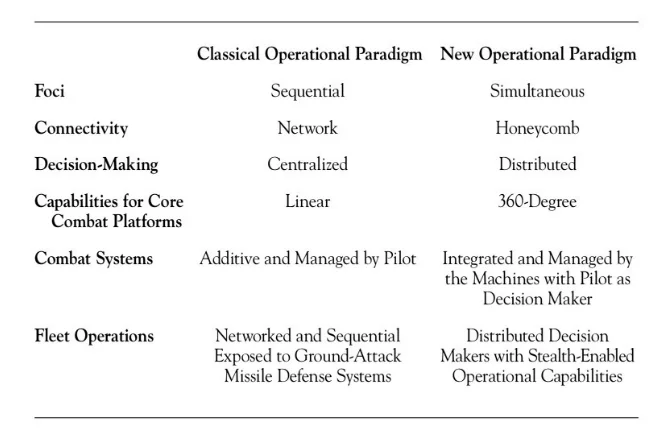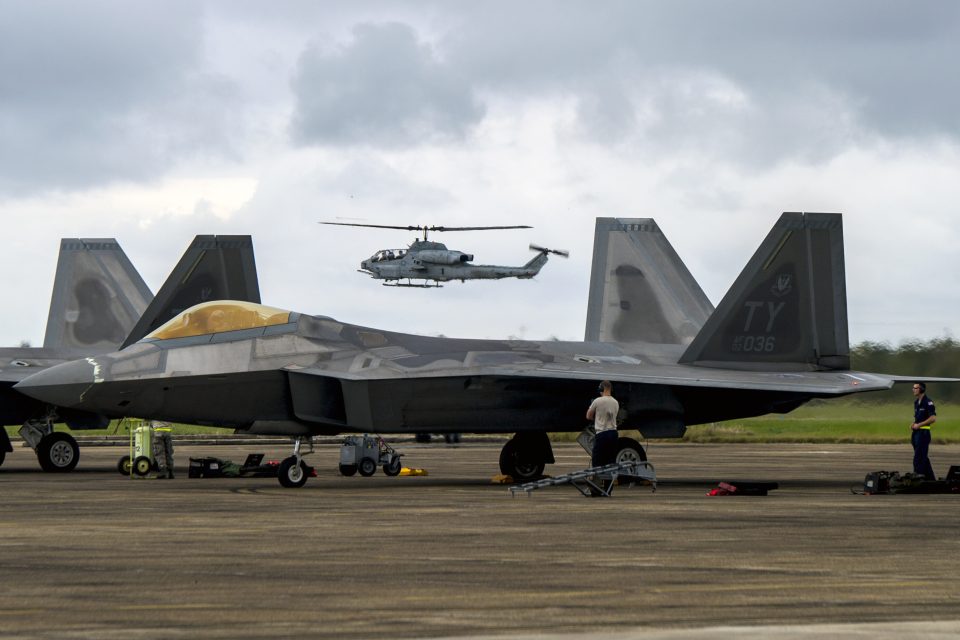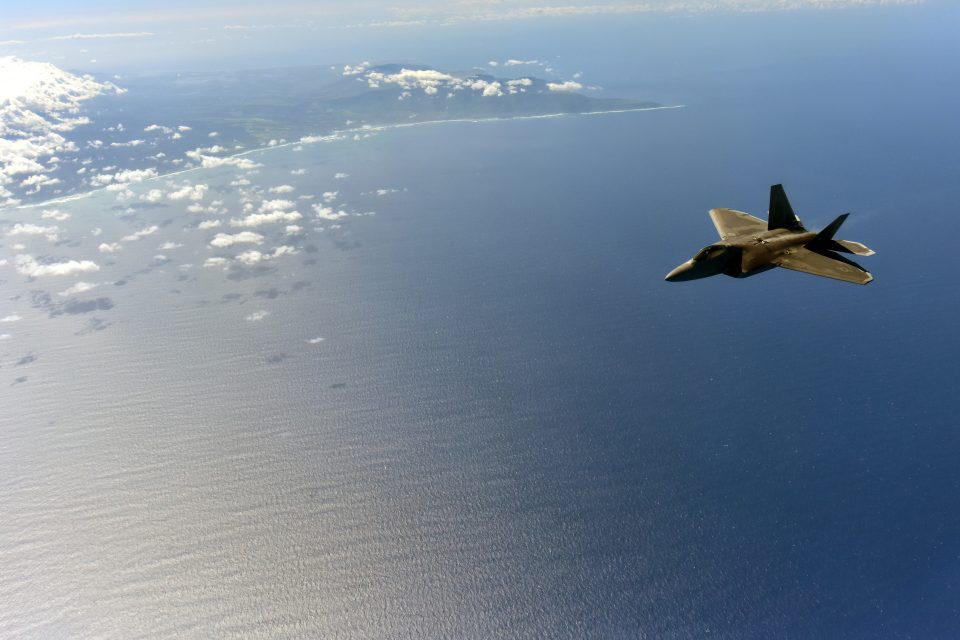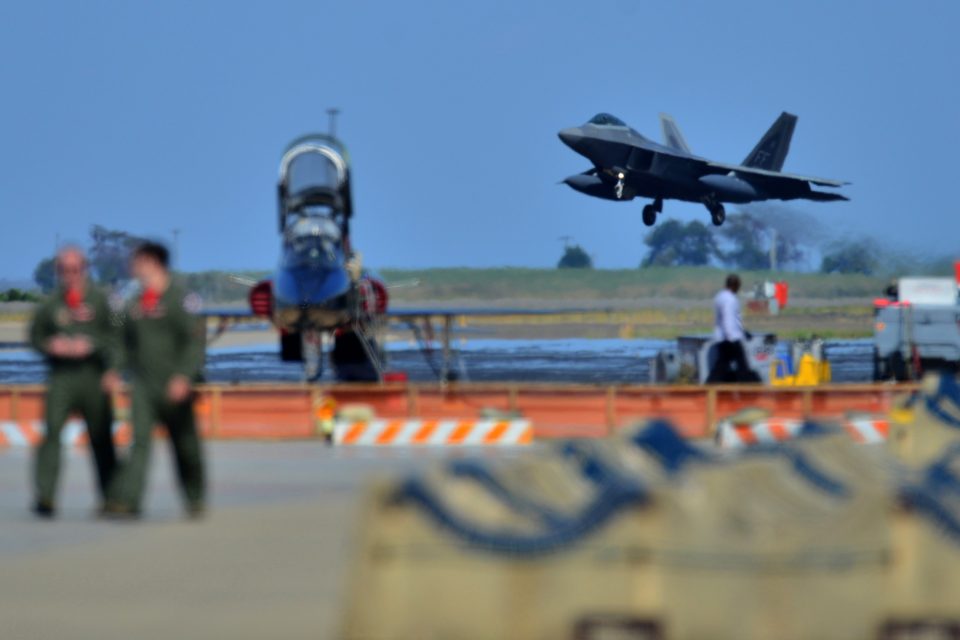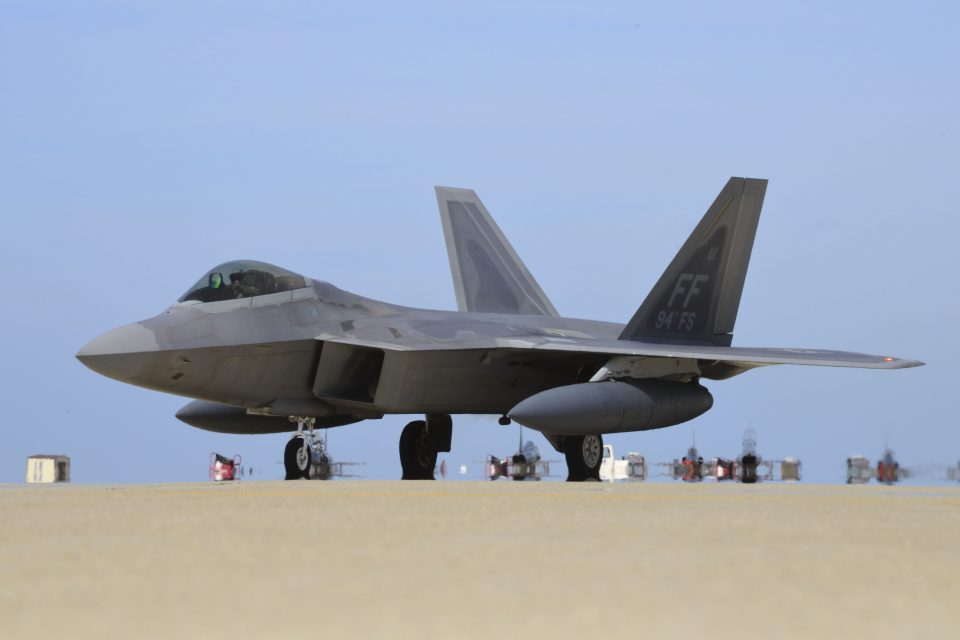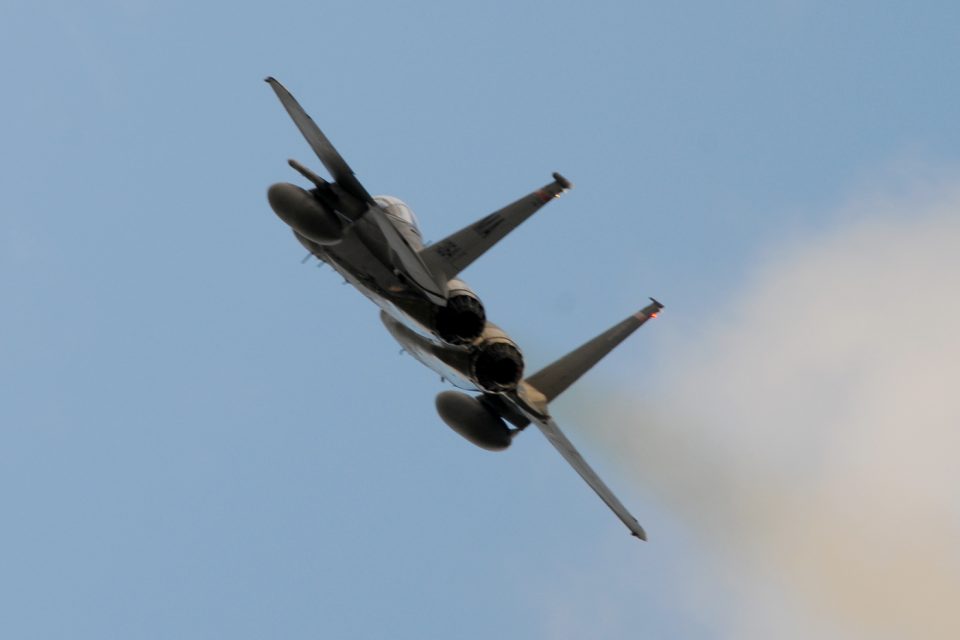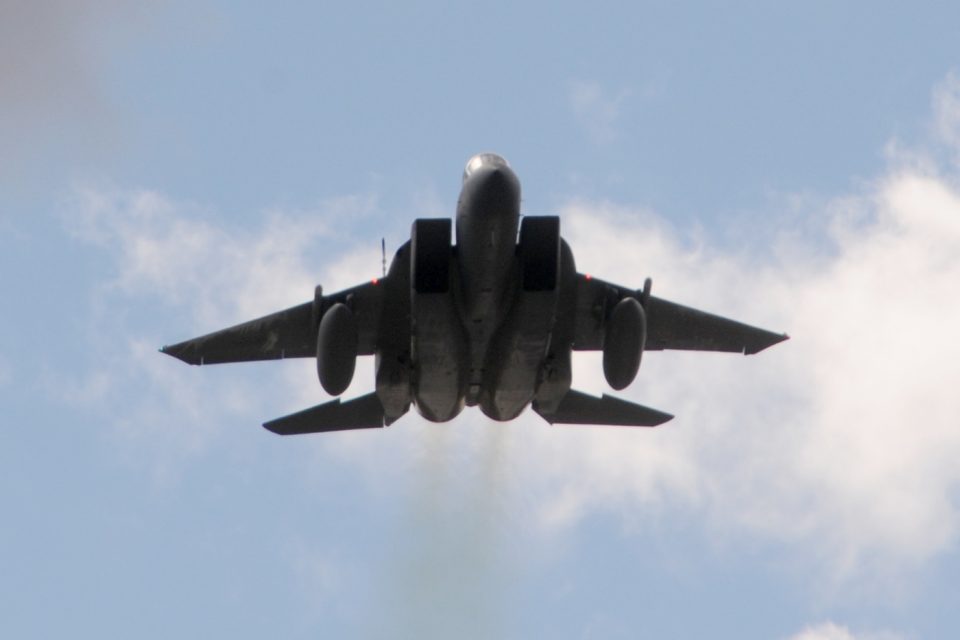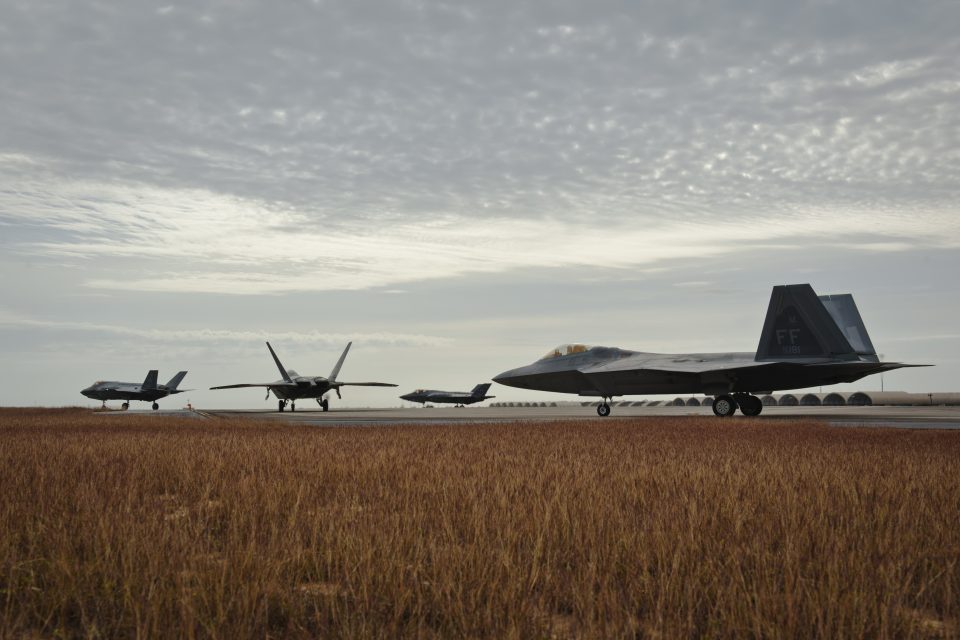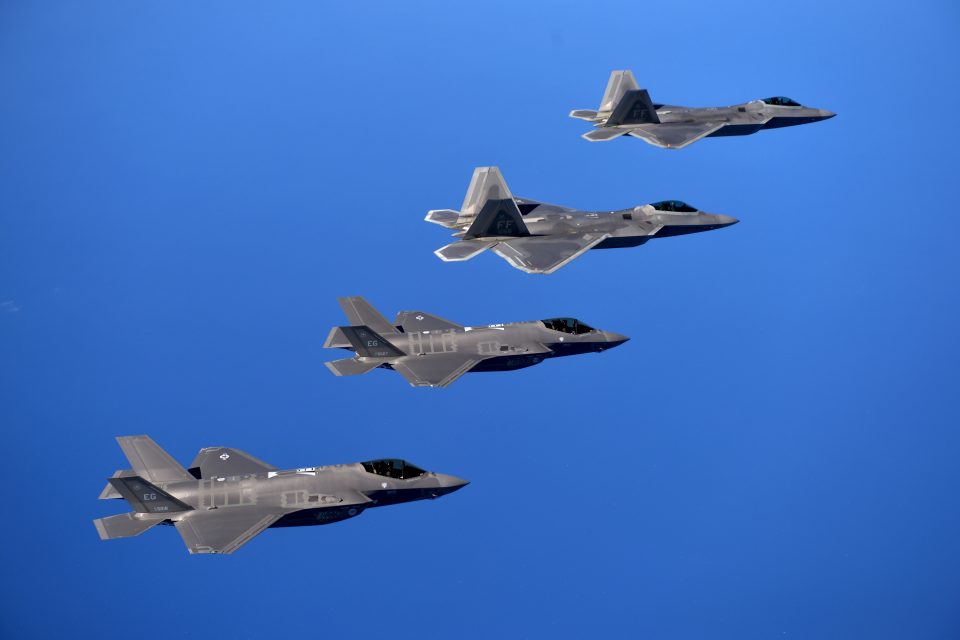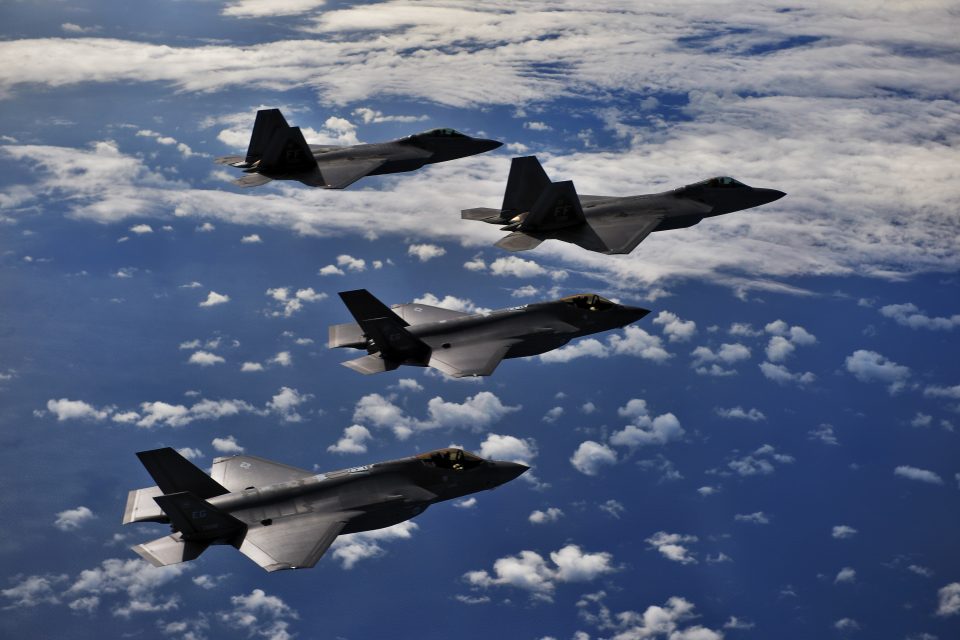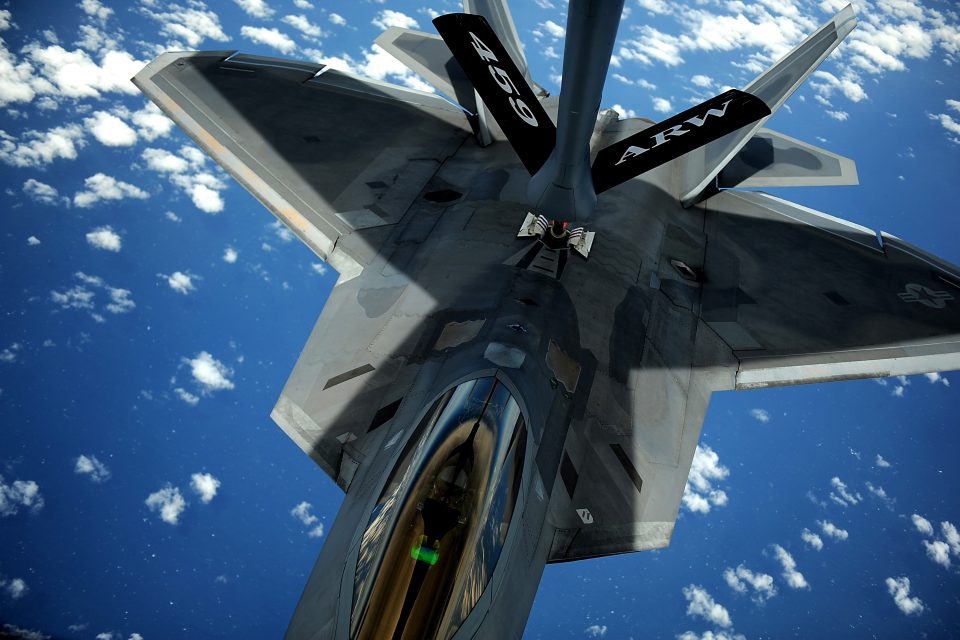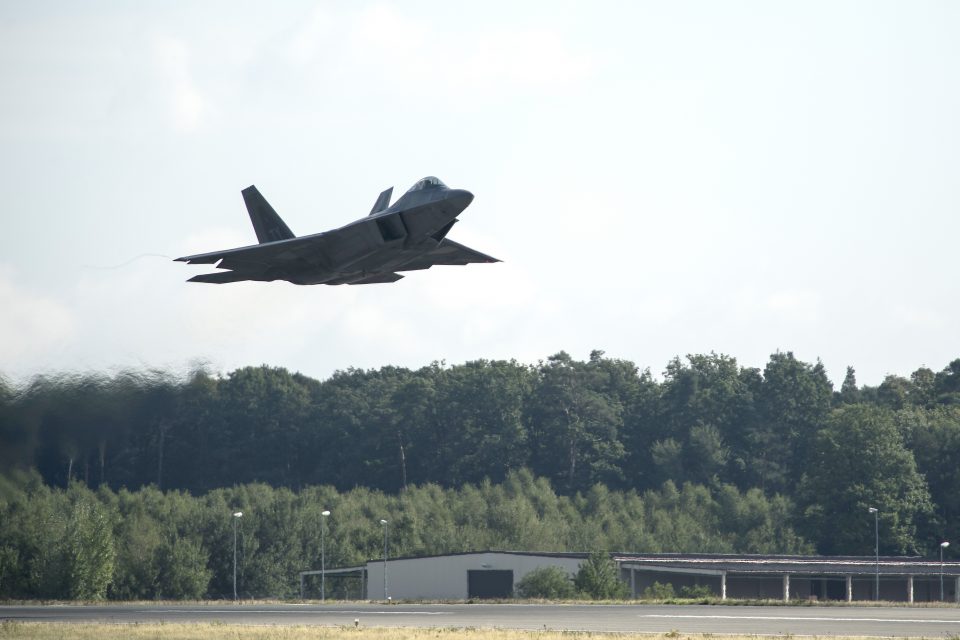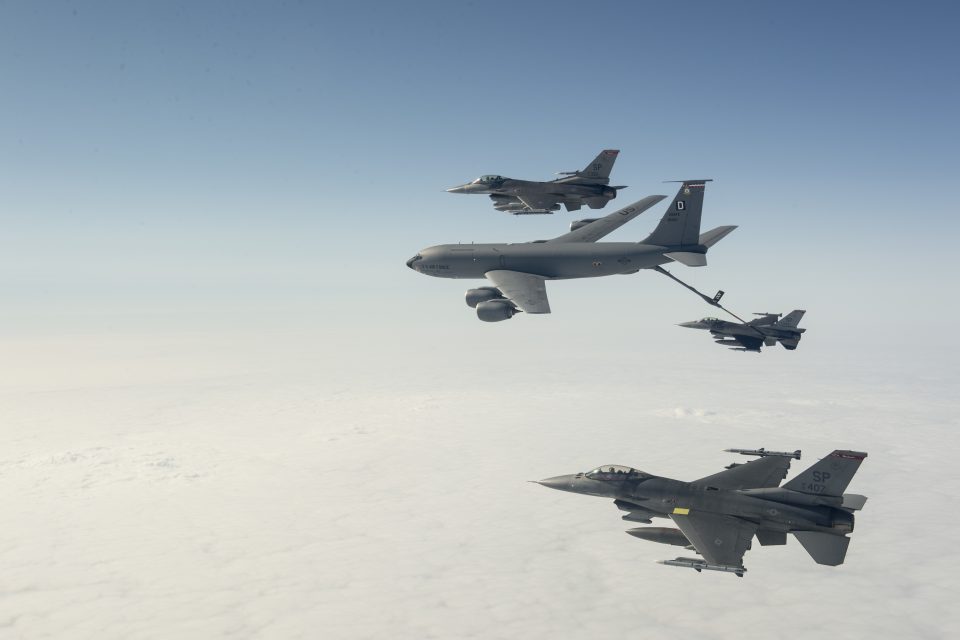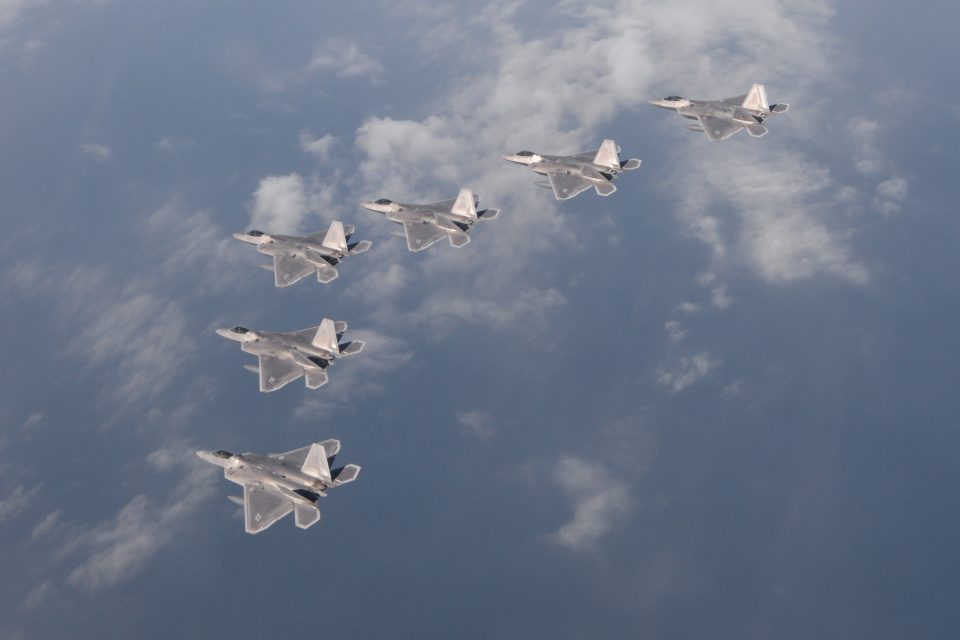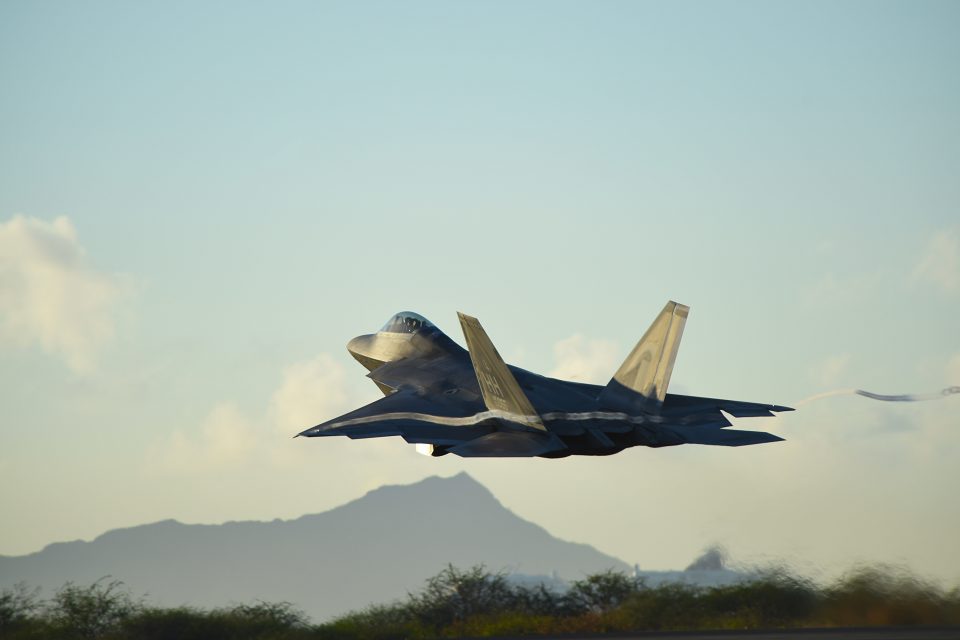2015-11-05 The USAF and its lead role for shaping air combat power has finished the first phase of re-norming under the influence of the F-22.
The F-22 and its impact is a good case study in a key challenge facing the defense analytical community.
The aircraft is not only stealthy but its impact has been even more so.
The F-22 is a breakthrough capability in terms of it having redefined what a tactical fighter can do and what its impact can be.
The F-22 has become a key enabler for the entire air combat force currently, and had led to a re-norming of airpower in practice.
The shift was well articulated by the Commander of the Air Combat Command in an interview in early September 2015.
Carlisle emphasized throughout our meeting the importance of the training transition throughout the fleet, not simply the operation of the F-22 and the coming of the F-35 as in and of themselves activities.
It is about force transformation, not simply the operation of the fifth generation aircraft themselves as cutting edge capabilities.
General Carlisle: “It is important to look at the impact of the F-22 operations on the total force. We do not wish, nor do the allies wish to send aircraft into a contested area, without the presence of the F-22.
It’s not just that the F-22s are so good, it’s that they make every other plane better. They change the dynamic with respect to what the other airplanes are able to do because of what they can do with regard to speed, range, and flexibility.
It’s their stealth quality. It’s their sensor fusion. It’s their deep penetration capability. It is the situational awareness they provide for the entire fleet which raises the level of the entire combat fleet to make everybody better.”
The shift is to a new way of operating.
What is crucial as well is training for the evolving fight, and not just remaining in the mindset or mental furniture of the past.
It is about what needs to be done NOW and training towards the evolving and future fight.
General Carlisle: “The F-22s are not silver bullets.
The F-22s make the Eagles better, and the A-10s better, and the F-16s better. They make the bombers better.
They provide information. They enable the entire fight.
And its information dominance, its sensor fusion capability, it’s a situational awareness that they can provide to the entire package which raises the level of our capabilities in the entire fight.
This is not about some distant future; it is about the current fight.”
https://sldinfo.com/f-22s-come-to-middle-east-operations-the-acc-commander-looks-at-the-way-ahead-2/
The slideshow shows various shots of the Raptor, the Eagle and of the F-22s training with F-35s and these aircraft area key elements of the renorming effort for the “fighter” force. Clearly, there are other participants as well but Raptor and Eagle integration tactics have led the way, and the coming of the F-35 will bring impetus to the next wave of renorming efforts, practices and concepts of operations.
The first photo shows an F-22 Raptor, from the 199th Fighter Squadron increasing in altitude shortly after taking off from Joint Base Pearl Harbor-Hickam, Hawaii, June 6, 2015. Pilots of the F-22 from the Hawaii Air National Guard’s 199th Fighter Squadron and the 19th Fighter Squadron teamed up with maintenance Airmen from the 154th Wing and 15th Maintenance Group to launch and recover 62 Raptors in a day. The previous record was 46 sorties in one day with 14 aircraft, this recorded was broken using only 12 of the 18 aircraft in the smallest F-22 squadron in the Air Force.
The second photo shows an AH-1W Super Cobra from Marine Light Attack Helicopter Squadron 773 Detachment A prepares to land as crew chiefs ready a Tyndall F-22 Raptor for take-off Oct. 27, 2015, during Exercise Southern Strike at Naval Air Station Joint Reserve Base Belle Chasse, La. Southern Strike allowed pilots to perform in a realistic environment and train with fourth and fifth generation fighters in high threat scenarios.
The third photo shows an F-22 Raptor from the 199th Fighter Wing as it soars over the island of Oahu as a part of Warrior Day exercises at Joint Base Pearl Harbor-Hickam, Hawaii, Oct. 28, 2015.
The fourth photo shows an F-22 Raptor returning to Langley Air Force Base, Va., from a deployment to the Middle East, Oct. 9, 2015. Approximately 200 members of the 1st and 192nd Fighter Wings were assigned to the United States Central Command providing support and stability to the region.
The fifth and sixth photos show an F-22 Raptor landing at Langley Air Force Base, Va., April 17, 2014. The 94th Fighter Squadron F-22 returned from a nearly four-month deployment to Kadena Air Base, Japan.
The sixth and seventh photos show an F-15 Eagle aircraft from the 104th Fighter Wing, Massachusetts Air National Guard deploy for two weeks in support of the United States Air Force Weapons Instructor School (WIC) located at Nellis Air Force Base, Las Vegas on Friday, Oct. 30, 2015. WIC teaches graduate-level instructor courses to elite fighter pilots, and provides the world’s most advanced training in weapons and tactics employment to officers of the combat air forces.
The eighth, ninth and tenth photos show F-22 Raptors from the 94th Fighter Squadron, Joint Base Langley-Eustis, Va., and F-35A Lightning IIs from the 58th Fighter Squadron, Eglin Air Force Base, Fla., perform final preflight checks before taking off for an integration training mission on Eglin Training Range, Fla., Nov. 6, 2014. The F-35s and F-22s flew offensive counter air, defensive counter air and interdiction missions, maximizing effects by employing fifth-generation capabilities together.
The 11th photo shows a KC-135 Stratotanker with the 756th Air Refueling Squadron, Joint Base Andrews Naval Air Facility, Md., refuels a 1st Fighter Wing’s F-22 Raptor from Joint Base Langley-Eustis, Va. off the east coast, May 10, 2012.
The first Raptor assigned to the Wing arrived, Jan. 7, 2005. This aircraft was allocated as a trainer, and was docked in a hanger for maintenance personnel to familiarize themselves with its complex systems.
The second Raptor, designated for flying operations, arrived, Jan. 18, 2005.
On Dec. 15, 2005, Air Combat Command commander, along with the 1st FW commander, announced the 27th Fighter Squadron as fully operational capable to fly, fight and win with the F-22.
The 12th photo shows a U.S. Air Force F-22 Raptor takes off from Spangdahlem Air Base, Germany, to participate in a training sortie over Europe Sept. 3, 2015.
The U.S Air Force deployed four F-22 Raptors, one C-17 Globemaster III, approximately 60 Airmen and associated equipment to Spangdahlem Air Base, Germany.
The deployment occurred from August 28 to mid-September 2015.
The F-22s are deployed from the 95th Fighter Squadron at Tyndall AFB, Fla. While these aircraft and Airmen are in Europe, they conducted air training with other Europe-based aircraft.
The F-22s also forward deployed from Germany to maximize training opportunities.
The 13th photo shows a U.S. Air Force F-16 Fighting Falcon from the 480th Fighter Squadron, Spangdahlem Air Base, Germany participate in a training sortie with F-22 Raptors Sept. 9, 2015, over the United Kingdom.
The 14th photo shows six F-22 Raptors from the 95th Fighter Squadron from Tyndall Air Force Base, Fla., fly over the Gulf of Mexico Nov. 5, 2015 during a local training mission.
The group of six F-22s were part of a large group formation of 15 Raptor
The final photo shows two F-15 Eagles fly in formation with an F-22 Raptor April 24, 2008 during a support mission near Nellis Air Force Base, Nev.
The F-15s act as “aggressors” to replicate potential adversary air force capabilities, tactics, training and equipment.
Credit Photos: US Air Force
For our book on Re-Norming which started with the projected impact of the F-22 on the air combat force see the following:
https://sldinfo.com/flipbooks/Renorming%20Air%20Power/RenormingAirPower/
From the initial re-norming work in 2010 which was included in the book published in early 2011:
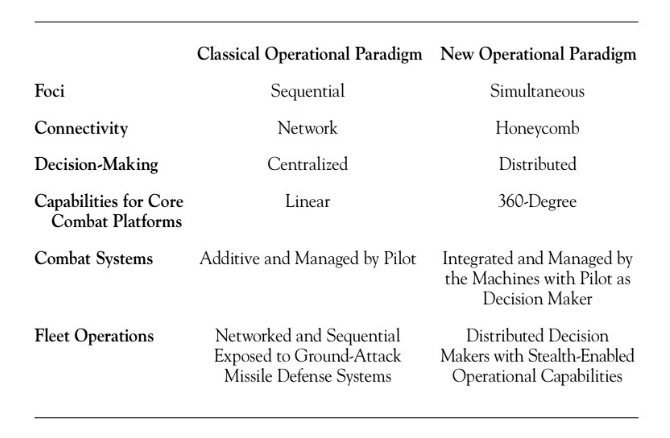
And for a clear articulation of why the F-22 was a key trigger of change made during the heyday of the “we don’t need this aircraft because it is a Cold War relic days”:
http://www.americanthinker.com/articles/2009/07/f22_to_japan_and_israel_a_debt.html


